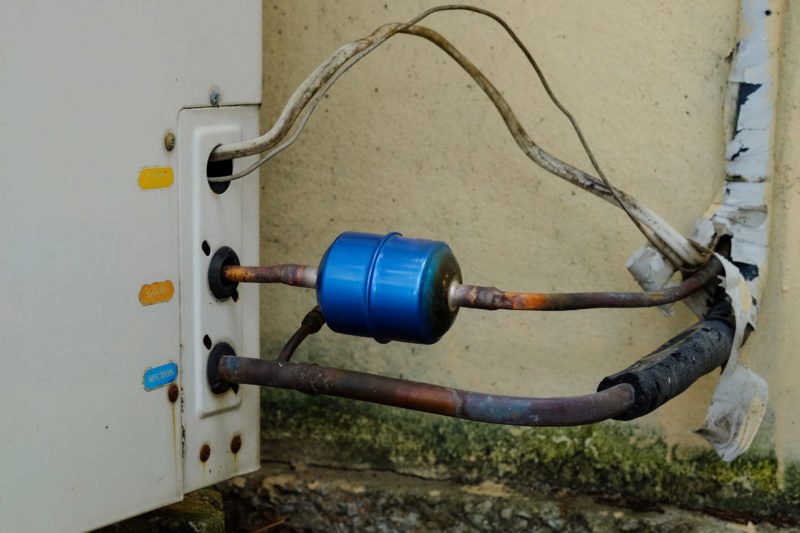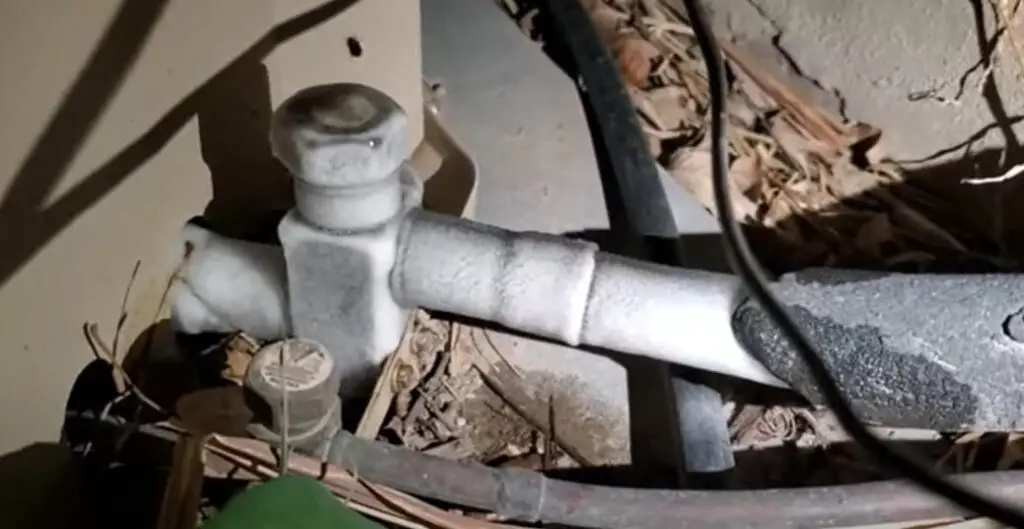Advice on Unfreezing a Frozen AC Pipe - Restoring Proper Functionality
Advice on Unfreezing a Frozen AC Pipe - Restoring Proper Functionality
Blog Article
This post listed below relating to What Causes AC Pipes To Freeze? is amazingly stimulating. You should give it a look.

Intro
Uncovering that your a/c pipe is iced up can be concerning, particularly throughout warm summertime when you rely on your ac system the most. Understanding what to do in such a circumstance is critical to prevent more damages to your cooling system and ensure your convenience inside your home.
Comprehending the Causes
Several aspects can contribute to the cold of an air conditioning pipeline. Comprehending these causes can assist you deal with the problem effectively.
Lack of Airflow
One common reason for an icy a/c pipeline is inadequate airflow. When the airflow over the evaporator coil is limited, it can cause the coil to drop below freezing temperature level, resulting in ice development on the pipe.
Reduced Refrigerant Levels
Not enough refrigerant levels in your a/c system can also result in a frozen pipeline. Low refrigerant levels can trigger the stress in the system to drop, causing the cold of moisture on the evaporator coil.
Winter Conditions
In colder climates, freezing temperature levels outside can contribute to the cold of a/c pipes. If your air conditioner device is not appropriately protected or if there are leaks in the ductwork, chilly air can infiltrate the system, creating the pipe to freeze.
Dirty Air Filters
Unclean or stopped up air filters can limit air movement in your air conditioning system, causing various problems, including a frozen pipe. It's important to replace or cleanse your air filterings system frequently to make certain proper air flow and stop ice build-up.
Signs of a Frozen Air Conditioning Pipe
Acknowledging the signs of an icy AC pipeline is crucial for timely activity.
Decreased Airflow
If you see a considerable decrease in air flow from your vents, it can suggest a frozen pipe.
Ice Buildup on the Pipe
Visible ice build-up on the cooling agent line or the evaporator coil is a clear indicator of a frozen air conditioning pipeline.
Odd Sounds from the Unit
Unusual audios, such as hissing or bubbling, coming from your AC device can signal that there's ice existing on the pipeline.
Immediate Actions to Take
When confronted with a frozen a/c pipe, it's necessary to act swiftly to avoid additional damages to your cooling system.
Shutting off the a/c
The initial step is to shut off your a/c unit to avoid the system from running and worsening the problem.
Checking for Blockages
Evaluate the location around the interior system for any type of obstructions that might be obstructing airflow, such as furniture or curtains.
Thawing the Pipe
You can use gentle approaches like putting towels soaked in warm water around the icy pipeline to aid thaw it gradually.
Preventive Measures
Taking safety nets can aid prevent future events of a frozen AC pipeline.
When DIY Methods Fail
If your efforts to thaw the pipeline or address various other problems are unsuccessful, it's time to call a specialist.
Importance of Hiring a Professional HVAC Technician
A qualified HVAC professional has the competence and devices essential to identify and repair issues with your air conditioner system securely and properly.
Routine Maintenance Checks
Schedule normal maintenance talk to a specialist HVAC service technician to make certain that your a/c system is running successfully.
Altering Air Filters
On a regular basis replace or clean your air filters to avoid air movement constraints and preserve ideal efficiency.
Protecting Exposed Pipes
If your air conditioner pipes are exposed to cool temperatures, think about insulating them to prevent freezing during cold weather.
Seeking Professional Help
If DIY approaches stop working to fix the concern or if you're uncertain regarding exactly how to proceed, it's ideal to look for support from a certified HVAC technician.
Verdict
Managing a frozen AC pipe can be a frustrating experience, yet understanding exactly how to respond can aid decrease damage and restore comfort to your home. By understanding the reasons, identifying the indicators, and taking prompt action, you can properly address the concern and prevent future events.
What to Do If Your AC Line Is Frozen
Make Sure All Supply and Return Air Vents Are Open
If you notice problems with airflow, the first thing you should do is check your supply and return vents. Supply vents distribute clean, conditioned air throughout your home. As this air becomes stale, it’s pulled into the return vent, where it’s reconditioned before being sent back out through the supply vent.
When these vents are closed, air won’t flow in the home. Before examining your AC, check the vents in every room and ensure they’re all open.
Check for a Dirty Air Filter
Another possible cause of limited airflow is a dirty air filter. Your air conditioner’s filters catch elements you don’t want to breathe in, such as dirt and dust. Over time, filters can become clogged, ultimately blocking air from flowing in and out. The lack of airflow can then cause the entire coil to freeze and will completely restrict any air from moving through it. The AC may need to be powered off for one to two days to allow the coil to thaw after replacing the filter to allow proper functioning of the unit. This debris can also accumulate on your AC’s evaporator coil, requiring a more serious repair. In general, air filters should be cleaned regularly (about every two weeks).
Assess Your Outdoor Unit
In addition to checking your AC, assessing the outdoor unit is a good idea. Also known as the condensing unit, it works with your interior unit to release heat outside. An issue with the outdoor unit can result in rising internal temperatures.
Overgrown Shrubs or Clogged Leaves
From leaves and twigs to shrubs and debris, there’s no shortage of outdoor elements that can accumulate around your condensing unit. When these elements get lodged inside the unit, they can block airflow. Fortunately, removing the blockage can solve the problem.
Sounds of a Broken Fan
Shrubs and leaves aren’t the only things that can impede your outdoor unit’s airflow. If the fan is broken, the unit won’t be able to properly get rid of heat — which means the internal temperature won’t go down. First, make sure the fan is spinning. If it is, check for the following sounds of a broken fan:
Buzzing Rattling Screeching Hissing Clicking Preventative Measures
Nobody wants to deal with a frozen AC line. In addition to causing problems with your air conditioner, they require professional repairs. On the bright side, there are preventative measures you can take to help ensure this issue doesn’t arise in the first place.
https://www.coopergreenteam.com/blog/what-to-do-if-ac-line-frozen

Do you appreciate more info about Air Conditioner Frozen? How To Fix your Frozen AC Line? Give a short review directly below. We'd be interested to find out your insights about this review. Hoping that you visit us again later on. If you enjoyed our blog post plz be sure to share it. I praise you for your time. Please pay a visit to our blog back soon.
Book My Estimate Report this page